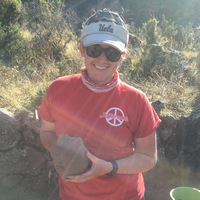Scotti M Norman
Warren Wilson College, Sociology and Anthropology, Faculty Member
- I am an anthropological archaeologist interested in colonial encounters, religious conversion, gender studies, and sp... moreI am an anthropological archaeologist interested in colonial encounters, religious conversion, gender studies, and spatial/landscape archaeology. My primary research focuses on the 16th century revitalization movement known as Taki Onqoy, which took place in the highlands of Peru.edit
- Steve Wernkeedit
Research Interests:
Sixteenth-century Spanish evangelization was initially haphazard and varied, producing a patchwork of Andean Catholic converts whose formalized commitment to the new religion (baptisms, marriage rites, funerals) hinged on regional... more
Sixteenth-century Spanish evangelization was initially haphazard and varied, producing a patchwork of Andean Catholic converts whose formalized commitment to the new religion (baptisms, marriage rites, funerals) hinged on regional priests. In the 1560s CE, a revitalization movement known as Taki Onqoy (Quechua: “dancing sickness”) fostered a population of highland Andean peoples who actively rejected Spanish traditions, religious beliefs, and practices. This article presents results from the first archaeological study of Taki Onqoy. Ceramic, faunal, and mortuary data suggest that rather than a monolithic body of individuals who denied or rejected Catholicism, Andeans were entangled within the two religious sects.
Research Interests:
Research Interests:
This paper uses multiple geochemical ceramic datasets generated using Laser Ablation Inductively Coupled Plasma Mass-Spectrometry (LA-ICP-MS) to reconstruct patterns in the manufacture of ceramics in four locales of the Inka realm.... more
This paper uses multiple geochemical ceramic datasets generated using Laser Ablation Inductively Coupled Plasma Mass-Spectrometry (LA-ICP-MS) to reconstruct patterns in the manufacture of ceramics in four locales of the Inka realm. Specifically, we compare local and Inka Polychrome styles in different regions of the empire. Collectively, these data reveal that local systems of production were not greatly transformed by imperial expansion. However, our results suggest that potters continued to produce their earlier styles and added Inka styles manufactured with similar raw materials to their repertoire. This indicates that they actively made use of newly introduced craft concepts during political shifts. These results show the adaptability of local ceramicists in experimenting and/or learning paste recipes to manufacture Inka forms and design canons. Additionally, the data highlight the role of potters as participants in Inka imperialism through their manufacture of both foreign pottery and local ceramic styles.
Research Interests:
Sixteenth-century Spanish evangelization was initially haphazard and varied, producing a patchwork of Andean Catholic converts whose formalized commitment to the new religion (baptisms, marriage rites, funerals) hinged on regional... more
Sixteenth-century Spanish evangelization was initially haphazard and varied, producing a patchwork of Andean Catholic converts whose formalized commitment to the new religion (baptisms, marriage rites, funerals) hinged on regional priests. In the 1560s CE, a revitalization movement known as Taki Onqoy (Quechua: “dancing sickness”) fostered a population of highland Andean peoples who preached for the rejection of Spanish traditions, religious beliefs, and practices. This article presents results from the first archaeological study of Taki Onqoy. Ceramic, faunal, and mortuary data suggest that rather than a monolithic body of individuals who denied or rejected Catholicism, Andeans were entangled within the two religious sects.
